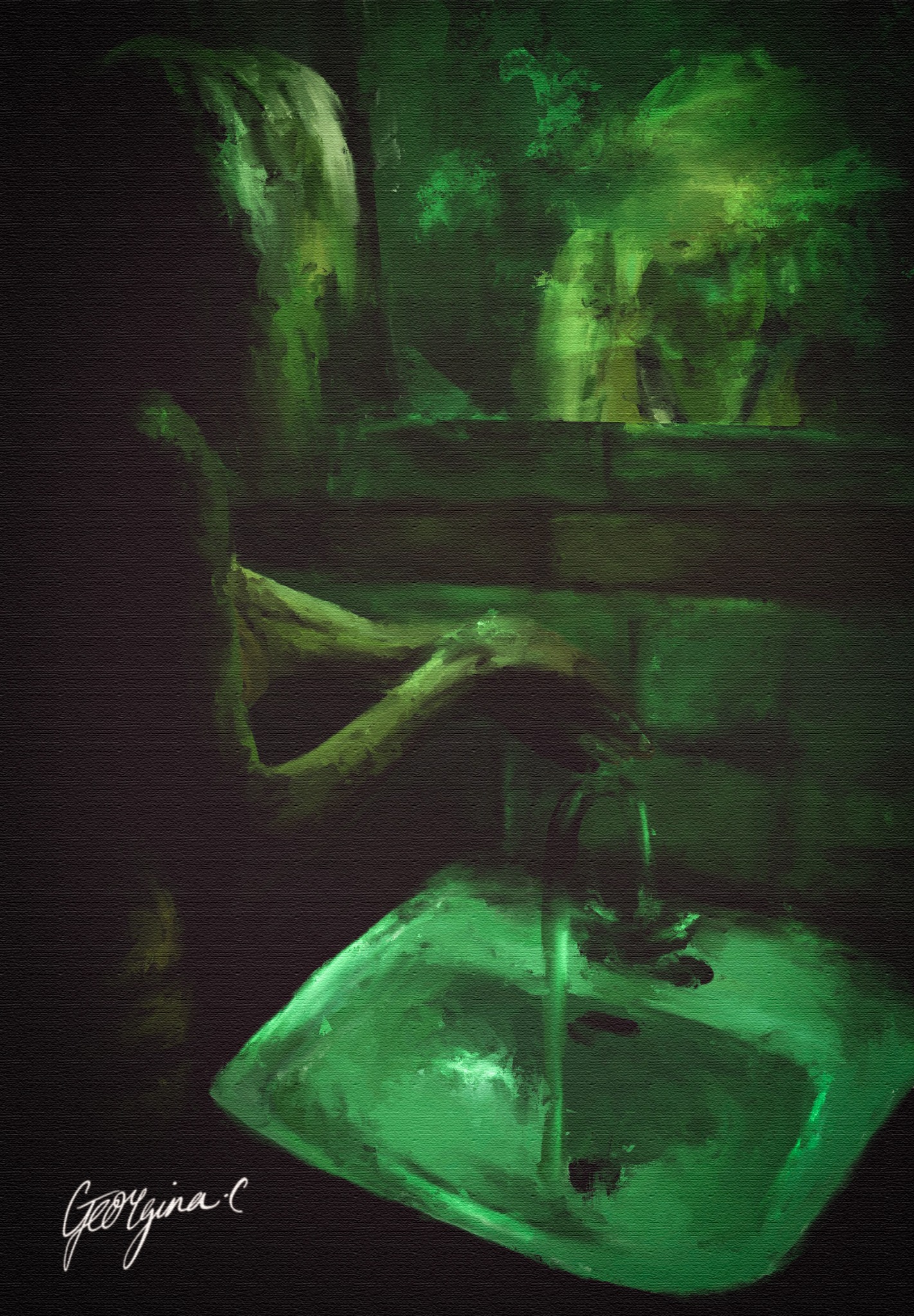
Verdant (2023)
Verdant (2023) explores reflection, contamination, and rebirth through a palette of corrosive green light. Blending Baroque chiaroscuro with psychological horror, Georgina M. Cox examines the tension between self-cleansing and self-erasure — what it means to wash your hands of something that’s already inside you.
⤷ When I painted Verdant, I wanted to explore the idea of purification as an obsession — the ritual of cleansing taken past reason, into compulsion. The title comes from the Latin viridis, meaning green or flourishing, but here the colour feels almost toxic. It’s the hue of something that wants to live and something that’s already begun to rot.
The figure stands in half-darkness, washing their hands beneath a stream of water that glows unnaturally. At first glance, it might seem like an act of hygiene or renewal, but the longer you look, the more ambiguous it becomes. The reflection in the mirror is fragmented — distorted by both light and motion — suggesting a split between body and self, between the desire to cleanse and the impossibility of ever being clean enough.
The palette is deliberately claustrophobic: deep viridian, phosphorescent highlights, and black shadows that swallow detail. I wanted the scene to feel submerged, as though it takes place underwater or inside the mind. The light itself becomes a character — not divine, but artificial, sickly, almost radioactive. It transforms a mundane act into a psychological performance.
Formally, the work draws heavily from Baroque chiaroscuro, the tension between illumination and concealment, but translates it through a modern, psychological lens. The brushwork is looser, more ghostlike, giving the impression of a half-remembered image. It feels both intimate and anonymous, as though the viewer has stumbled upon a private ritual.
Verdant also connects to my broader exploration of the body as both sacred and contaminated space. It questions how guilt, shame, or memory can manifest physically.
Ultimately, this painting isn’t about cleanliness at all — it’s about transformation through decay. The green light isn’t the colour of new life, but of something irreversibly altered. In that way, Verdant sits at the intersection between horror and grace — where self-awareness becomes both salvation and curse.
0 Comments Add a Comment?